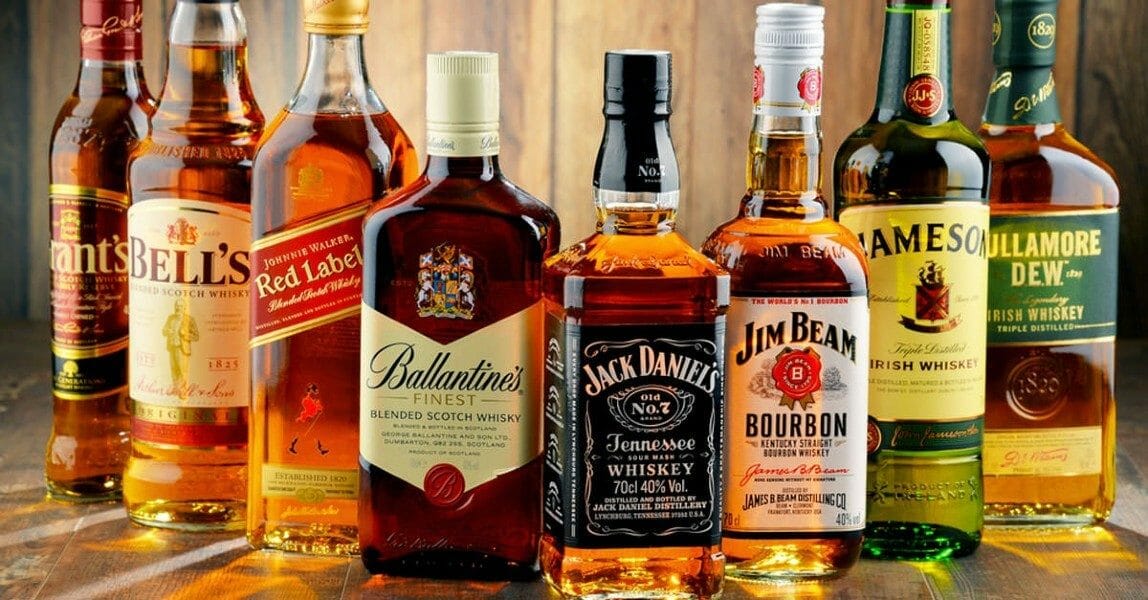
The latter is a blend of a 16-year-old bourbon and a 15-year-old high-rye bourbon that pays tribute to the family’s first distiller, Jacob Beam, and it’s said to be some of the best bourbon being produced at the busy distillery.

The label launched with just two bourbons in its portfolio: the two-year Colonel James B. Hardin’s Creek Jacob’s Well: In summer 2022, bourbon legend Jim Beam launched a new high-end label called Hardin’s Creek. You may or may not see these bottles show up in a more official form in a future version of this guide once we've tried them ourselves.

Our inclusions in this guide are based on real-world testing and firsthand expert feedback, but there are a few new and upcoming bourbons we haven't had a chance to try yet that still warranted a mention. He has contributed frequently to our bourbon coverage over the years and is someone we regard as a friend. Simply put, Minnick knows bourbon better than almost anyone in America. He has written multiple books on bourbon, has served as a judge at the San Francisco World Spirits Competition and the World Whiskey Awards, is the founder of Bourbon+ magazine, was the former lead American whiskey reviewer at Whiskey Advocate, hosts The Fred Minnick Show podcast (about bourbon) and is the Bourbon Authority for the Kentucky Derby Museum. We relied on one of the most-esteemed bourbon experts in America, Fred Minnick. This is not a new phenomenon and it plays a large role in blended bourbons. Non-Distiller Producers (NDP): Companies that purchase their whiskey from someone else rather than making it themselves. Single Barrel: A bourbon made using single barrels, providing a higher range of variation in flavor and the chance at specific, unique characteristics. Small Batch: A subjective term signaling a bourbon made using a select number of barrels or recipes in a blended bottling. This tends to produce a softer, less spicy whiskey. Wheated: A bourbon with a higher than normal percentage of mash bill made up of wheat (the main grain remains corn). This tends to produce spicier flavors in the bourbon. High Rye: A bourbon with a higher than normal percentage of mash bill made up of rye (as opposed to using more corn, wheat, or barley, the other main grains used in bourbon mash). Proof: The percentage of alcohol, displayed as double that of the alcohol percentage.

The sour mash prevents wild yeast from entering the mash and causing infections. Sour Mash: A fermentation technique used by almost all bourbon distillers that employs pre-fermented mash from a previous distilling in a new mash. It can be a blend of multiple straight bourbon whiskeys as long as they're all produced in the same state.īottled in Bond: Under the Bottled-in-Bond Act of 1897, a bottled-in-bond spirit must be produced by one distillery in the same distilling season, then aged under federal supervision and cut and bottled at 100 proof. Straight Bourbon Whiskey: Bourbon that is stored in charred new oak for at least two years. For our money, the best do-it-all bourbon is Knob Creek's 9-year-old Small Batch offering. Looking for something on the cheap? Evan William's Black Label is hard to beat for the money. If you want craft bourbon, we love New Riff's dedication to Bottled-in-Bond whiskey-making and rich flavor profiles. If you're making drinks, we prefer the light and spicy Four Roses bourbon.

We don't believe there is one "best" bourbon, but there are bottles that are best for certain moments. At a minimum, bourbon must be 80 proof (or 40 percent alcohol), with its mash never allowed to exceed 160 proof (or 80 percent alcohol). Bourbon always has to be aged in new charred oak barrels at no more than 125 proof (or 62.5 percent alcohol), and it's not allowed to include any additives or colorings. Bourbon is a type of whiskey that needs to meet a few criteria to officially be called "bourbon." First, bourbon can only be made in America, and its grain bill must include at least 51 percent of corn.


 0 kommentar(er)
0 kommentar(er)
